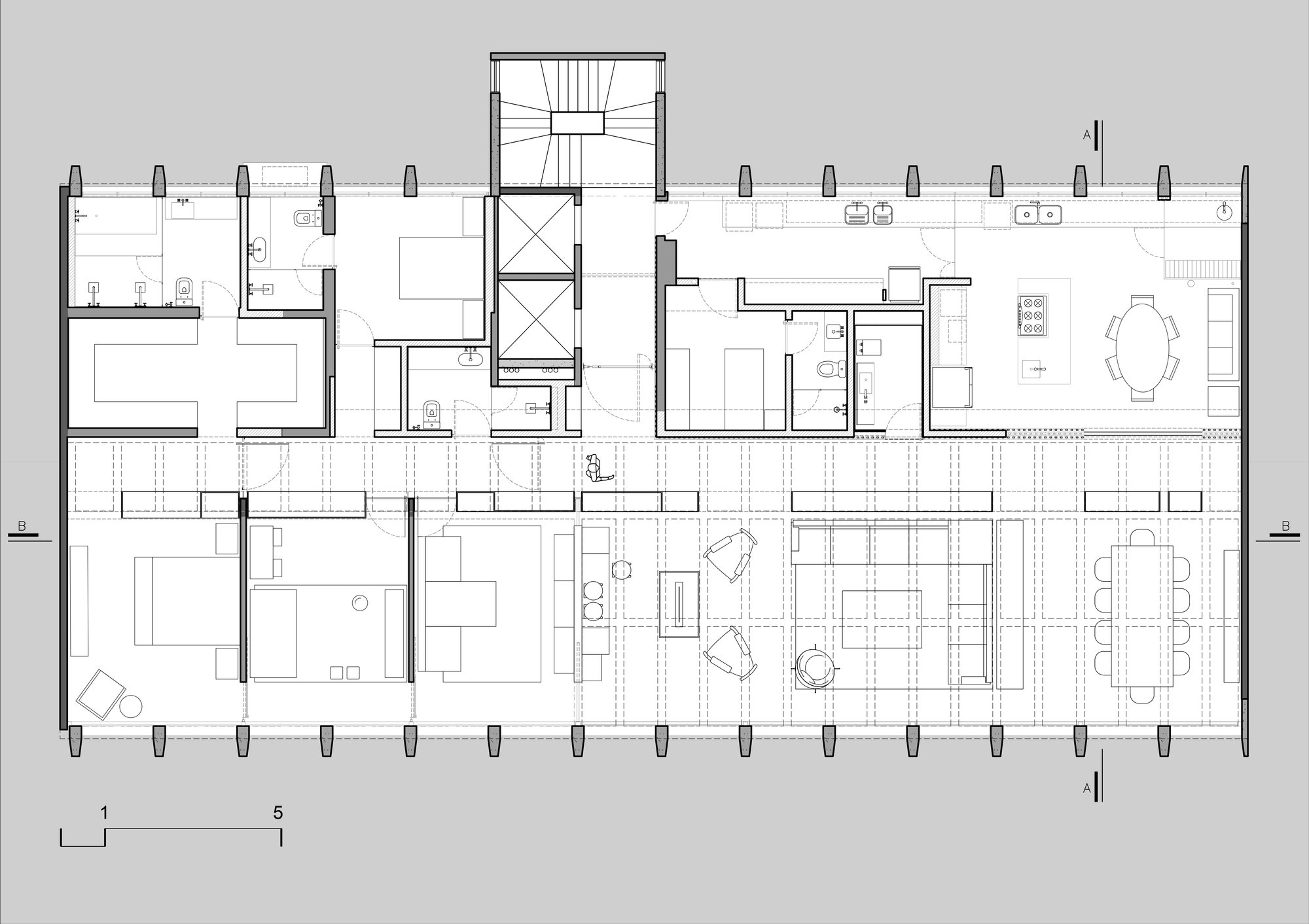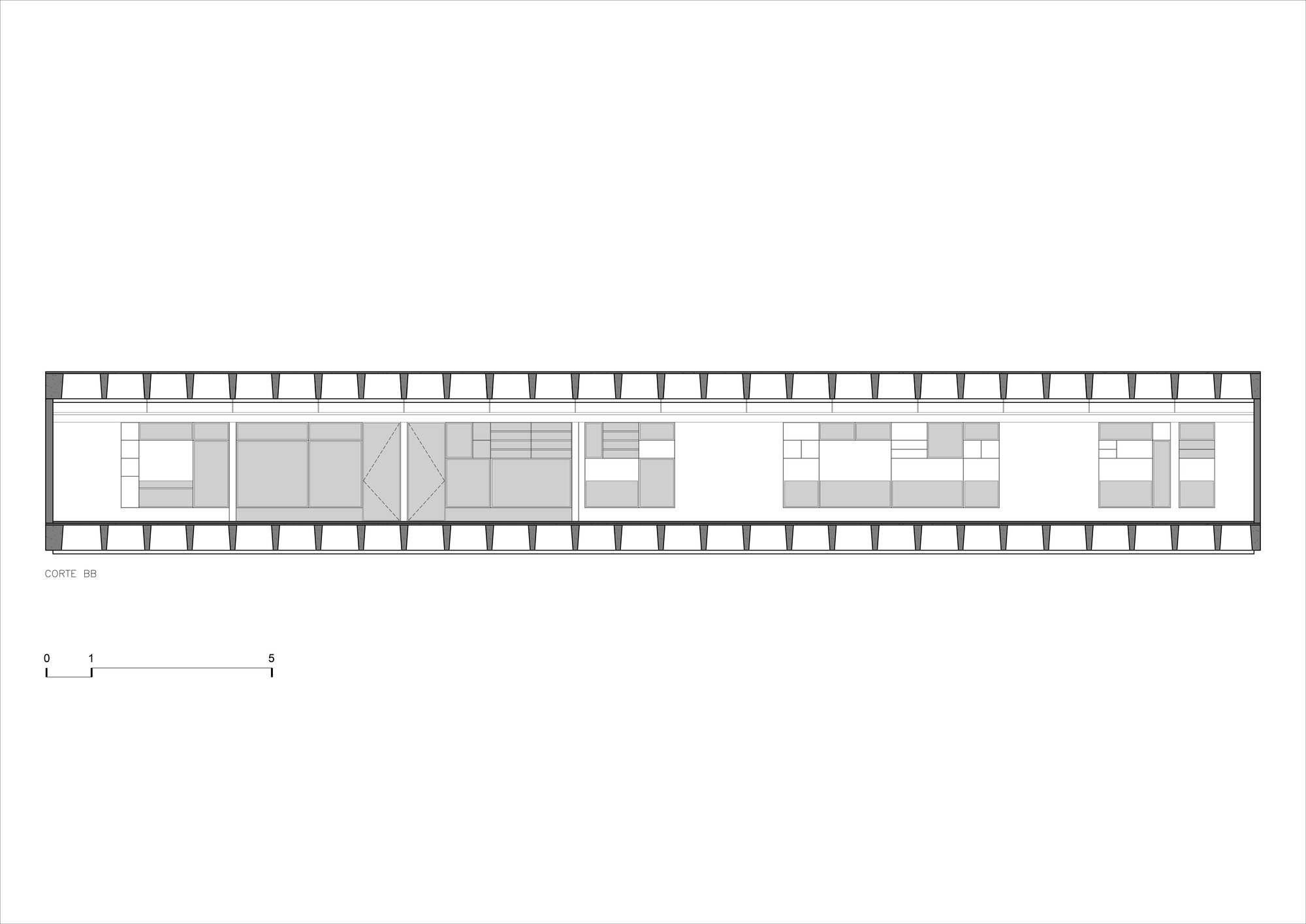August 6, 2023
AMRA7 Apartment radiates with an extended facade that captivates the passers-by.
_project: AMRA7 Apartment
_architecture: Piratininga Arquitetos Associados & Bruno Rossi Arquitetos
_location: São Paulo, Brazil
The AMRA7 apartment project, a collaborative design by Piratininga Arquitetos Associados and Bruno Rossi Arquitetos, showcases a harmonious blend of modernist Brazilian architecture and strategic innovation. Situated in the Antônio Augusto Correia Galvão building, a historic masterpiece of architects Botti & Rubin from 1964, the apartment radiates a captivating appeal, with an extended facade that captivates the passers-by in Alameda Ministro Rocha Azevedo. Marcos Aldrighi, from Piratininga Arquitetos Associados, expresses admiration for the striking contrast of exposed concrete and lightweight wooden paneling, echoing the architectural style of muxarabis used in the building's windows.
A significant feature of the building that caught Marcos's attention was the absence of any internal pillars on each floor, credited to the adoption of a structural system defined by concrete grids on the building's front and rear facades. This structural design creates a free span across the entire width of the floor, ensuring flexibility in apartment occupation. The building, thus, is a distinctive example of Brazilian modernist architecture, naturally fostering a generous interface between the edifice and the city.
The remodel of the AMRA7 apartment posed specific challenges, stemming from the task of distinguishing the original architectural elements from those introduced over time. Renata Semin, also from Piratininga Arquitetos Associados, recounts the intriguing discovery that the original architectural conception of the building already exhibited the concrete grid system. As a result, existing installation pathways, especially those related to plumbing and sewage, could not be altered. The solution was to design two 'hemispheres' on the floor, one 'dry' with living rooms and bedrooms, and another 'wet', housing bathrooms, the kitchen, and service areas.
The influence of original architects Alberto Botti and Marc Rubin is perceptible in the renovated AMRA7 design. Bruno Rossi expresses that when intervening in a building of high architectural quality, solutions seem pre-defined, and understanding these directives is vital. Hence, the structural modularity dictated by the concrete grid naturally guided the apartment's design, with each room being the result of the existing beam's metrics. Bruno emphasizes, "In other words, the new project was always there."
Another key influence from the original design was the muxarabis concept, adopted in the building's window frames as a light filter. The proposed bookshelf extension matches the length of the facade's muxarabis, functioning as a second light filter and firmly demarcating the boundary between the 'dry' and 'wet' hemispheres. In sum, the AMRA7 project is a beautiful testament to the seamless blend of respect for original architecture and modern design innovation.
credits
_written by Daniela Moreira Silva
_film by Architecture Hunter
_cover image by Nelson Kon
_drawings by Piratininga Arquitetos Associados & Bruno Rossi Arquitetos:




You’ve prove to be a great hunter. Now that you have reached the bottom, maybe it’s time to know us more.